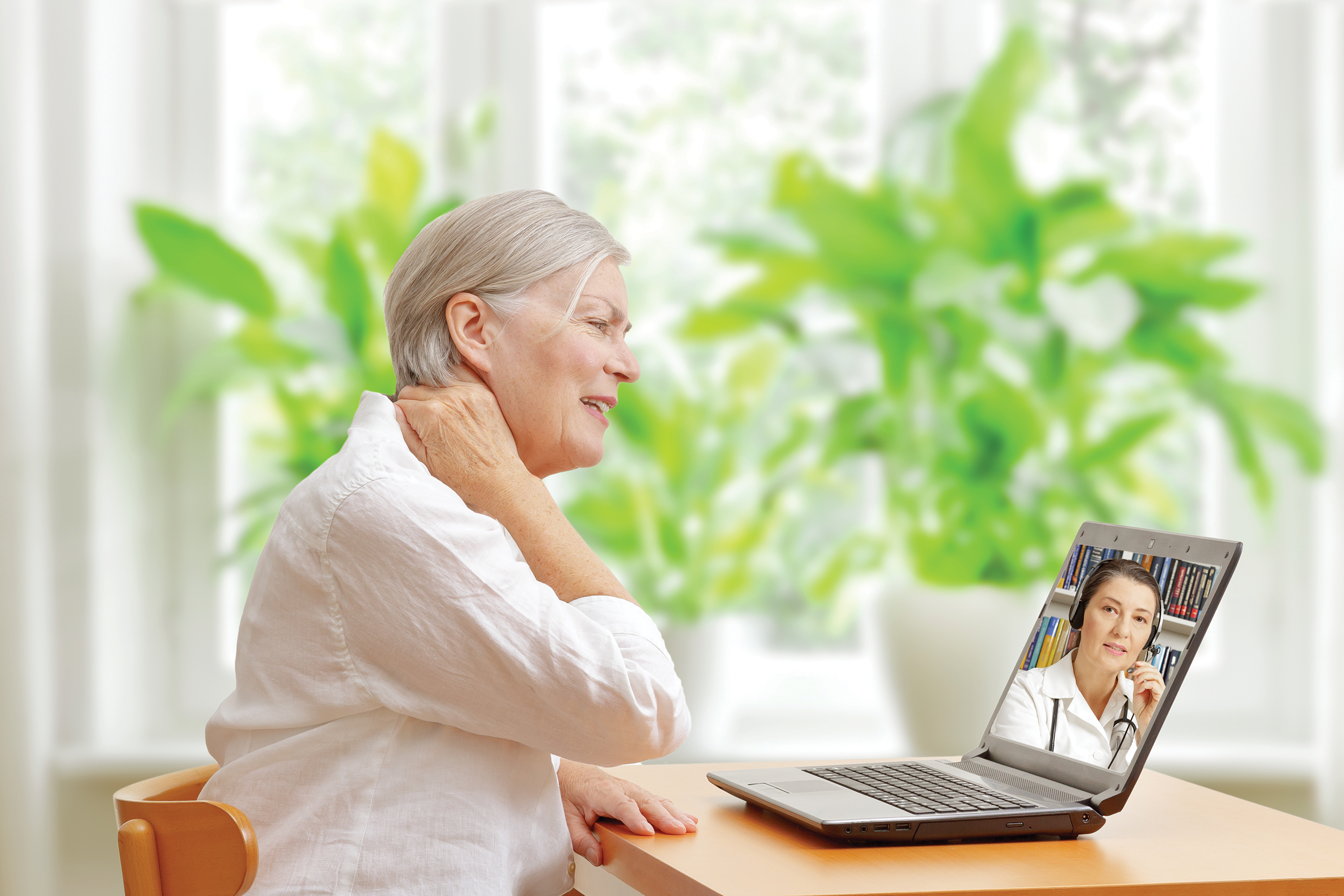Role, training, and process
Telehealth refers to a range of disciplines (including medicine, radiology, and nursing) that provide health services via electronic information and telecommunication technologies. The American Academy of Ambulatory Care Nursing describes telephone nurse triage as a unique component within telehealth nursing. It provides RNs with a unique opportunity to use critical thinking and assessment skills to help patients determine the appropriate level of care they need. These nurses can refer patients to the emergency department (ED) or urgent care, make an appointment with their primary care provider, offer advice to help the patient get through the night until the provider’s office opens, or offer suggestions and education for patients to treat themselves at home. The level of care provided by telephone triage nurses can help prevent unnecessary or inappropriate ED or urgent care visits.
Telephone triage isn’t the same as ED triage, which determines patient acuity and the order in which they should be treated. An after-hours telephone triage nurse serves as a bridge for patients and caregivers between home and the healthcare setting and provides appropriate resources.
Telephone triage role
Experienced nurses work in telephone triage within various settings (healthcare provider offices, outpatient care centers, telephone triage centers, poison control centers, crisis hotlines, managed care organizations, or health insurance companies) to assist patients and caregivers of infants, children, or dependent adults over the phone, via videoconference, or through other types of virtual platforms. They listen to a caller’s concerns, assess individual needs quickly, determine the level of care required, and provide guidance. Many telephone triage services are available 24 hours a day, 7 days a week.
Recognizing stroke symptoms via telephone triage
Telephone CPR improves cardiac arrest outcomes
Because telephone triage nurses can’t use their sense of sight, smell, or touch to evaluate the patient or perform a clinical assessment, they must rely on the caller’s answers to guide their assessment and the advice they provide. Some triage nurses work with patients, families, and populations to promote wellness, manage acute illness, assist in managing chronic illness or disability, support families in end-of-life care, provide care coordination, or evaluate care outcomes. Some common, acute symptoms a telephone triage nurse may encounter include cough, cold symptoms, vomiting, diarrhea, fever, abdominal pain, sore throat, earache, or rashes. Support from a telephone triage nurse can range from providing reassurance and calming the fears of new parents to calling for an ambulance in a life-threatening situation.
Telephone triage nurses use published protocols, guidelines, and algorithms to manage calls using a process that includes an introduction, confirmation of demographics, brief medical history, chief complaint, assessment and guideline selection, triage, transition, advice and education, and closing. They don’t diagnose medical conditions; rather, they offer advice and education based on the reported symptoms.
Telephone triage process
The American Academy of Ambulatory Care Nursing developed a model of telehealth nursing practice that uses the nursing process to provide effective patient care. The assessment includes an interview, data collection, and prioritization of care needs. During the interview, the nurse reviews the patient’s health history, chronic medical conditions, medications, and medication allergies. Data collection includes verbal responses and any other indicators that can be heard over the phone, including background noise. The nurse must be sensitive to what’s heard, expressed, or stated, while maintaining awareness of symptoms that indicate an emergency that requires transfer to an ED.
The nurse analyzes the patient’s concerns by assessing the onset, duration, severity, and relevant associated signs, symptoms, and history of the problem. The information gathered during the assessment helps the nurse develop an effective plan of care. The nurse chooses the most appropriate decision support tools based on the reason for the call or chief complaint. Examples of established protocols include Schmitt’s Pediatric Telephone Protocols, Thompson’s Adult Telephone Protocols, and Bunik’s Breastfeeding Telephone Triage and Advice (published by the American Academy of Pediatrics).
After completing the assessment and triage of the patient’s symptoms, the nurse uses problem-solving, critical thinking, and clinical judgment skills to sort through the information and arrive at an appropriate disposition, which can include making an emergency care recommendation, providing first aid instructions, offering patient education, counseling, coordinating resources, assisting with appointment scheduling, or facilitating appropriate follow-up care. The telephone encounter concludes with an agreement that the caller understands the recommendations and agrees to comply with them. Before the call ends, the telephone triage nurse explains when the caller should call back (for example, if the condition worsens) and provides an opportunity for the caller to ask questions or clarify information.
Evaluating the telephone encounter includes reviewing call documentation, which should be complete, objective, accurate, timely, legible, and comprehensive. The telephone triage nurse should reflect on the call and conduct an analysis to review and evaluate the effectiveness of the nursing process during the encounter. Safety and effectiveness rely on a robust quality assurance program that focuses on quality over speed and the number of calls. It may include listening to call recordings, reviewing documentation, and observing calls. (See Triage call steps.)
Triage call steps
Telephone triage calls break down into the following steps:
- Introduce yourself and explain your role.
- Gather basic patient information and pertinent medical history.
- Quickly identify the patient’s reason for calling.
- Ask appropriate assessment questions and use evidence-based guidelines, protocols, or algorithms.
- Determine the appropriate level and urgency of care needed.
- Offer advice and education and formulate a brief plan of care.
- Ensure the patient understands and agrees with the plan and follow-up care.
- If the caller doesn’t have a healthcare provider, offer recommendations or referrals to local resources.
- Document call events and provide a summary for the healthcare provider. Telephone encounter documentation becomes a part of the patient’s medical record.
Triage nurse qualities
A telephone triage nurse typically is an RN with several years of experience in a hospital or ambulatory care setting. They listen effectively, have excellent communication skills, and offer accurate, individualized, and appropriate advice or education based on the reason for the call and their patient assessment. They must have expert critical thinking skills and the ability to reason systematically and logically. Empathy, essential to telephone triage nursing, requires that nurses demonstrate understanding, patience, and compassion, and that they offer education and reassurance without judgment.
Telephone triage nurses rely on previous clinical skills to foster a trusting relationship with the patient and adapt their communication skills to meet individual needs. They must remain objective so they can detect when patients minimize or over-emphasize symptoms or if they have an atypical presentation. Telephone triage nurses should feel comfortable using technology, including recorded internet or digital protocol telephones, video conferencing, VPN internet connections, computer software, and artificial intelligence. The American Academy of Ambulatory Care Nurses’ Scope and Standards of Practice for Professional Telehealth Nursing promotes the effective management of services provided by telephone triage nurses. Although no specific certification for telephone triage nursing exists, the ambulatory care nursing certification exam includes questions related to telehealth triage.
Training
Telephone triage nursing requires several weeks to months of training and preparation depending on previous professional experience. Nurses begin by reviewing the organization’s policies and procedures, the role of the triage nurse, and guidelines and protocols. Some organizations may incorporate published training modules or reading materials. Training helps new triage nurses adapt their prior assessment techniques to focus on what can be asked about or heard over the telephone.
Role-playing and mock calls allow trainees to practice using evidence-based guidelines and protocols in a controlled environment, familiarize themselves with the organization’s programs and software, and hone their decision-making skills. Training also may include observing live calls triaged by experienced nurses, which allows new nurses to hear and observe interactions with callers and the decisions made. When new telephone triage nurses begin taking live calls, an experienced nurse or trainer listens in so they can intervene if necessary and provide immediate feedback. (See 11 telephone triage tips.)
11 telephone triage tips
The goals of telephone triage include establishing rapport with the patient and encouraging them to follow recommended advice. The following tips can help achieve these goals:
- Present a confident, professional, and compassionate demeanor to build trust and provide reassurance.
- Ask open-ended questions to give the caller an opportunity to share important information in their own words.
- Ask key questions to aid assessment of the patient’s symptoms. For example, if the caller asks how to treat a child’s cold, a key question might be, “How is your child’s breathing?”
- Collect adequate information and clarify vague details.
- Listen not just to what the caller is saying, but also how they’re expressing it. For example, a patient may say they’re not having any difficulty breathing but you hear them speaking in short phrases or answering in single words.
- Avoid medical jargon. Speak in lay terms so the caller can understand the assessment questions and the information provided.
- Use active listening, clear communication, and critical thinking.
- Summarize what the caller says to aid clarification.
- Educate the caller about the signs or symptoms to watch for that might indicate a change in their status.
- Provide clear, concise advice and instruct the caller to call back if symptoms worsen.
- When in doubt, or in cases with a high level of concern, refer the patient to their primary care provider.
The art of triage
A 2020 quasi-experimental research study by Graversen and colleagues explored the safety and efficiency of telephone triage nursing compared with general practice. They found that telephone triage nurses, using a computerized decision support system, had a higher rate of quality and safety compared to calls triaged by general practitioners. The study concluded that telephone triage nursing doesn’t increase mortality, hospitalization, or ED referrals. A 2017 systematic review by Lake and colleagues showed no significant difference between telephone triage nursing and traditional care and found that triage is safe in most cases.
Telephone triage nursing is more than just a phone call. It’s an art that combines the science of nursing, clinical knowledge, critical thinking, and digital technology.
Christina M. Rausch is the quality and nurse educator at University Hospitals-Rainbow Advice Center in Cleveland, Ohio.
American Nurse Journal. 2023; 18(6). Doi: 10.51256/ANJ0623135
References
American Academy of Ambulatory Care Nursing. Telehealth nursing practice. aaacn.org/practice-resources/telehealth
Eriksson I, Ek K, Jansson S, Sjöström U, Larsson M. To feel emotional concern: A qualitative interview study to explore telephone nurses’ experiences of difficult calls. Nurs Open. 2019;6(3):842-8. doi:10.1002/nop2.264
Graversen DS, Christensen MB, Pedersen AF, et al. Safety, efficiency and health-related quality of telephone triage conducted by general practitioners, nurses, or physicians in out-of-hours primary care: A quasi-experimental study using the Assessment of Quality in Telephone Triage (AQTT) to assess audio-recorded telephone calls. BMC Fam Pract. 2020;21(1):84. doi.org/10.1186/s12875-020-01122-z
Koehne K, Stein J. Telephone triage is professional nursing practice. ViewPoint. 2020;42(2):1,12-13.
Koontz KB. Hire not fire! Selecting the best qualified candidate for telephone triage nursing. MEDSURG Nurs. 2019;28(4):264-8.
Lake R, Georgiou A, Li J, et al. The quality, safety and governance of telephone triage and advice services—An overview of evidence from systematic reviews. BMC Health Serv Res. 2017;17(1):614. doi:10.1186/s12913-017-2564-x
Mataxen PA, Webb LD. Telehealth nursing: More than just a phone call. Nursing. 2019;49(4)11-3. doi:10.1097/01.NURSE.0000553272.16933.4b
Patterson C, Marks G, Thompson D. Telehealth triage—Getting to yes. Schmitt-Thompson Clinical Content. stcc-triage.com/stcc-newsletter-blog/cg754kgcfdhb44twphjdl5tvaqd0q9
Schmitt B, Nicklas D. Telephone triage nurses and telemedicine providers: Key strategies for teamwork in pediatric offices. Contemp Pediatr. 2020;37(9):40-3.


















